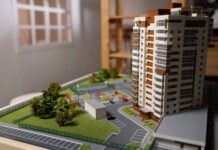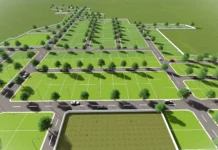The social fabric of Saboli, a developing neighbourhood in Delhi, has been profoundly influenced by migration. People from different regions of India relocate to Saboli, bringing with them a variety of cultures, customs, and economic pursuits that together alter the dynamics of the local society. This vibrant mix is perfectly captured in “Samanvai,” a new residential community offering spacious plots in saboli to build your dream home and embrace the spirit of Saboli.
Shifts in Demography
The demographic shift is one of migration’s most obvious effects on Saboli. The region now has a more diversified population as a result of the migration wave, with residents hailing from many states, ethnic groups, and religious traditions. Through the introduction of diverse cultural practices, languages, and cuisines, this diversity enhances the community. Residents celebrate festivals from several locations, which promotes multiculturalism and respect for one another.
Financial Affect
Immigration has a significant effect on the local economy. A large number of migrants arrive in Saboli in search of work in a variety of industries, such as retail, services, and construction. The informal economy and small companies in the area depend heavily on their labour. The labour force, small business owners, and street sellers all make substantial contributions to Saboli’s economic life. Furthermore, talented immigrants frequently introduce new professions and services that improve the economy and open up new growth prospects.
Integration and social cohesion
There are benefits and drawbacks to integrating immigrants into Saboli’s social structure. On the one hand, a more dynamic and welcoming community may result from the blending of many cultures. Migrants frequently create support systems to aid one another in overcoming the difficulties of relocating. These networks have the power to strengthen a person’s sense of community and belonging.
Integration isn’t always easy, though. Tensions within the community can occasionally be caused by linguistic obstacles, cultural disparities, and resource competitiveness. Friction may arise from long-term inhabitants feeling threatened or dislocated from their cultural identity. Community projects and local government must prioritize encouraging inclusivity and understanding among citizens in order to lessen these problems.
Modifications to Social Dynamics
Social dynamics are impacted by migration in a number of ways. Newcomers frequently bring with them changes to the social mores and customs of the area. Customs may change to accommodate the new cultural aspects that immigrants bring with them. This may result in the merging of customs, giving Saboli a distinct, hybrid cultural identity
Health and Education Services
The needs of migrants also place a strain on the community’s health and education systems. The growing number of students attending Saboli schools calls for the extension and enhancement of the school system’s infrastructure. Likewise, health services need to change to accommodate a bigger and more varied clientele, which may put pressure on available resources but may also lead to improvements in the way that services are provided.
Conclusion: Migration has a complex effect on Saboli’s social structure, posing both opportunities and problems. The community benefits from the demographic diversity, which promotes cultural and economic exchange. But maintaining social cohesiveness necessitates coordinated actions to overcome integration obstacles and advance inclusion. Through acknowledging and resolving the issues raised by migration, Saboli can maintain its status as a vibrant and peaceful community.







